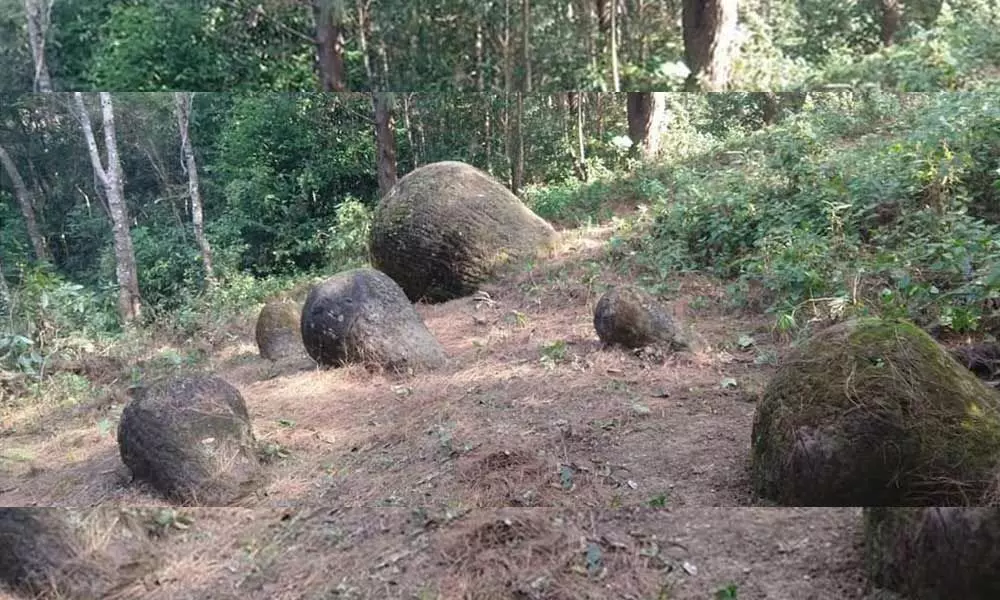Archaeologists Discovered Giant Stone Jars In India

Megalithic jars at Herakilo. (Tilok Thakuria)
- 65 massive sandstone vessels protrude from the ground were found while four previously discovered locations.
- Assam now has a total of 11 recognised megalithic jar sites.
Archaeologists have discovered new sites in Assam in India adding to a long-standing enigma. 65 massive sandstone vessels protrude from the ground were found while four previously discovered locations.
Some of these ancient artefacts are tall and cylindrical, while others are bulbous or fashioned like two piled cones. Some have been partially or completely buried. It's unclear who made them or what role they served. Whatever their purpose, it appears to be more common than we previously thought.
With this discovery, Assam now has a total of 11 recognised megalithic jar sites. Laos and Indonesia have each discovered similar sites. They date from the second millennium BCE to the thirteenth century CE.
Human bones discovered in and around the Laos jars indicate that they were used for mortuary purposes.
British civil workers Philip Mills and John Henry Hutton first formally described megalithic jar sites in Assam in 1929, reporting six sites. The seventh site wasn't located until a 2016-2017 excursion as part of Mills and Hutton's work to relocate and document the sites they mentioned.
The previously unknown sites began to appear when the work recommenced in 2020, led by archaeologist Tilok Thakuria of India's North Eastern Hill University.
archaeologist Nicholae Skopal of the Australian National University in Australia said that the crew began by surveying three huge locations that had not before been fully studied. Grids were then built up to explore the thickly forested areas surrounding the area. This is when we initially started looking for additional jar sites, he added.
The four new places were the village of Herakilo, where 10 jars were discovered, six on the outskirts of the village and the remaining four relocated to the village. Another place, ridgeline at Thaimodholing, where 12 badly damaged jars were discovered. The third place known at spur at Thaimodholing, where eight jars were discovered, some relocated a short distance from the original spot, probably due to the construction of a road; and Lower Chaikam, where 35 jars were discovered.
Once the seven previously identified locations are combined together, a total of 797 jars in varied degrees of preservation have been discovered throughout a 300-square-kilometer area (115 square miles). The jars appear to have been placed on slopes, spurs, and hills with glimpses of the plains.
According to archaeologists, however, no sources of the sandstone from which the jars are carved have been discovered near any of the sites. Furthermore, there are bits of evidence that the Assam jars, like the Laos jars, were used for funeral rites.
Next Story














